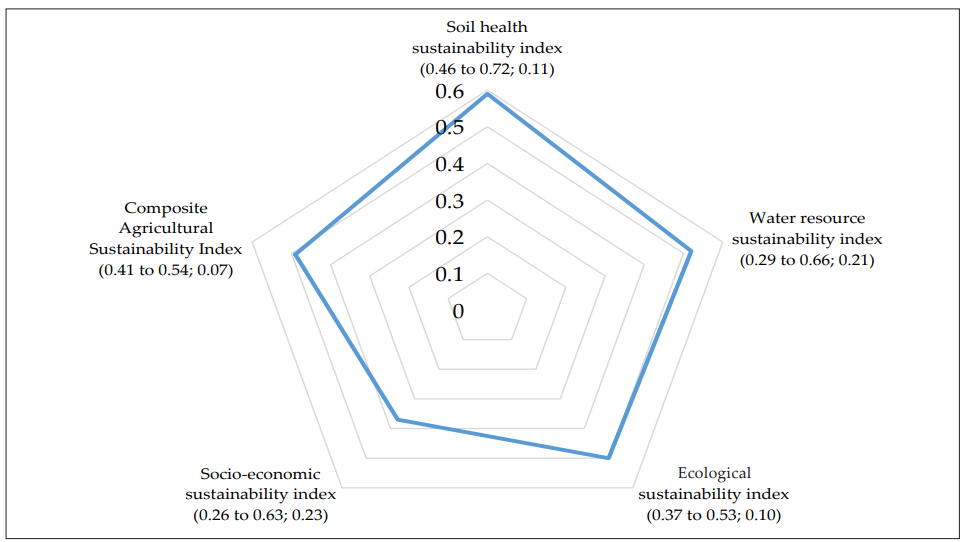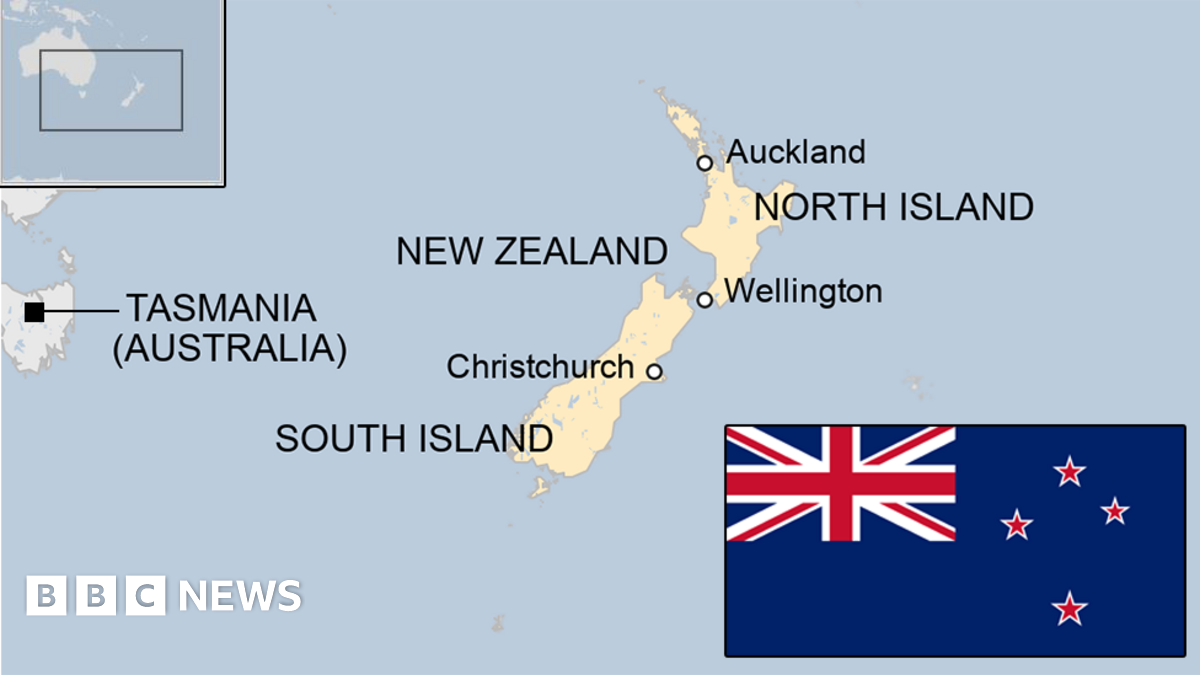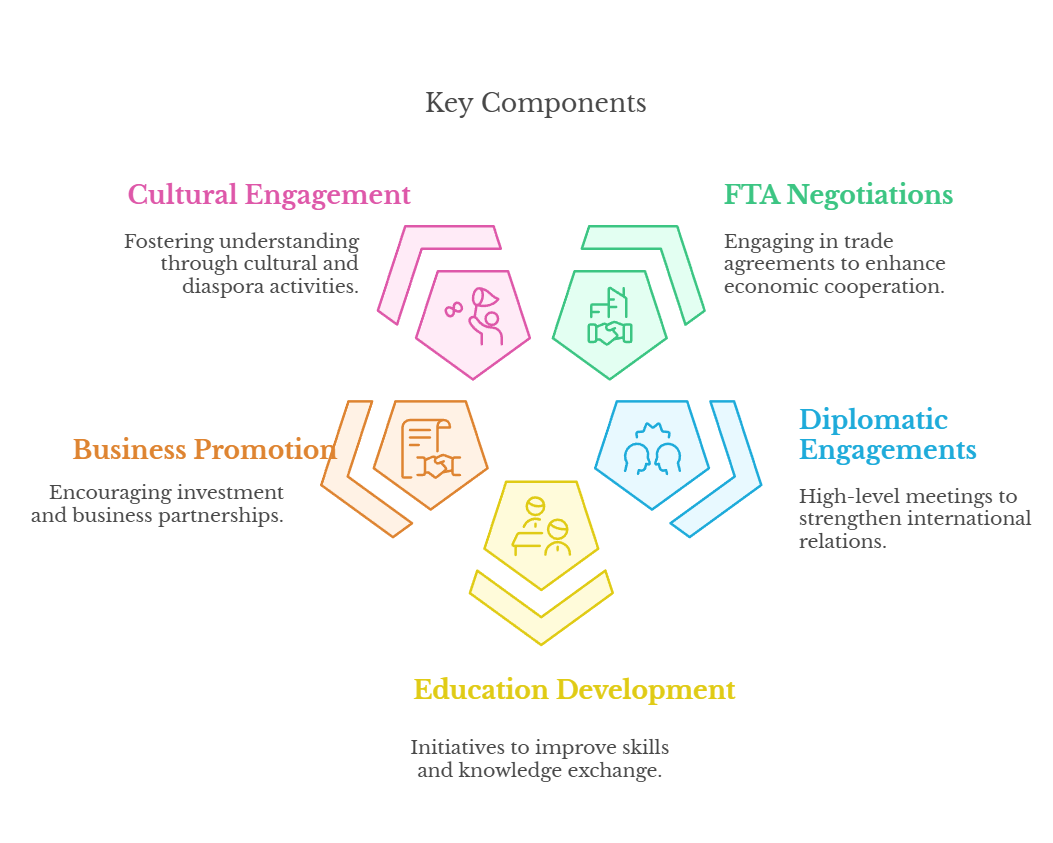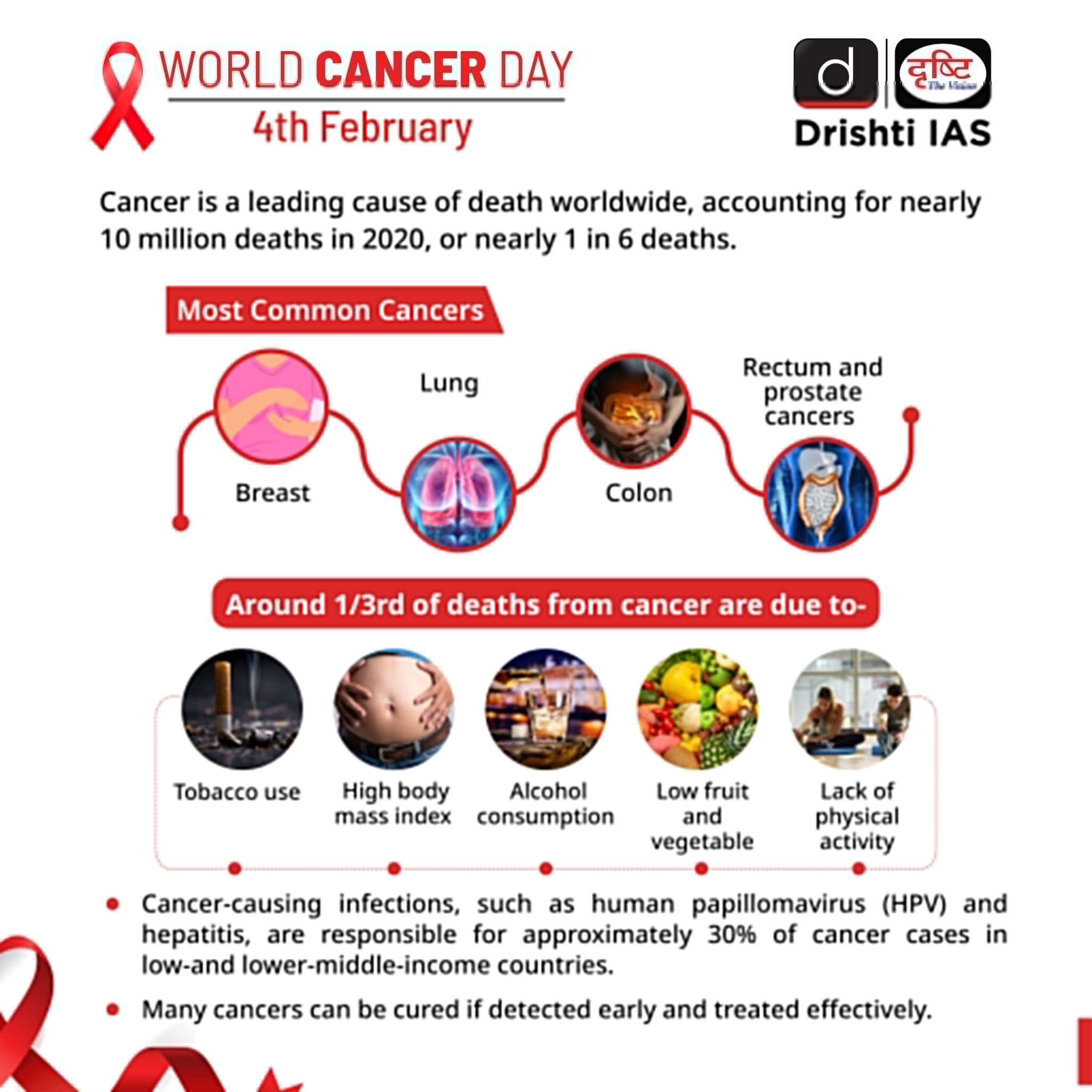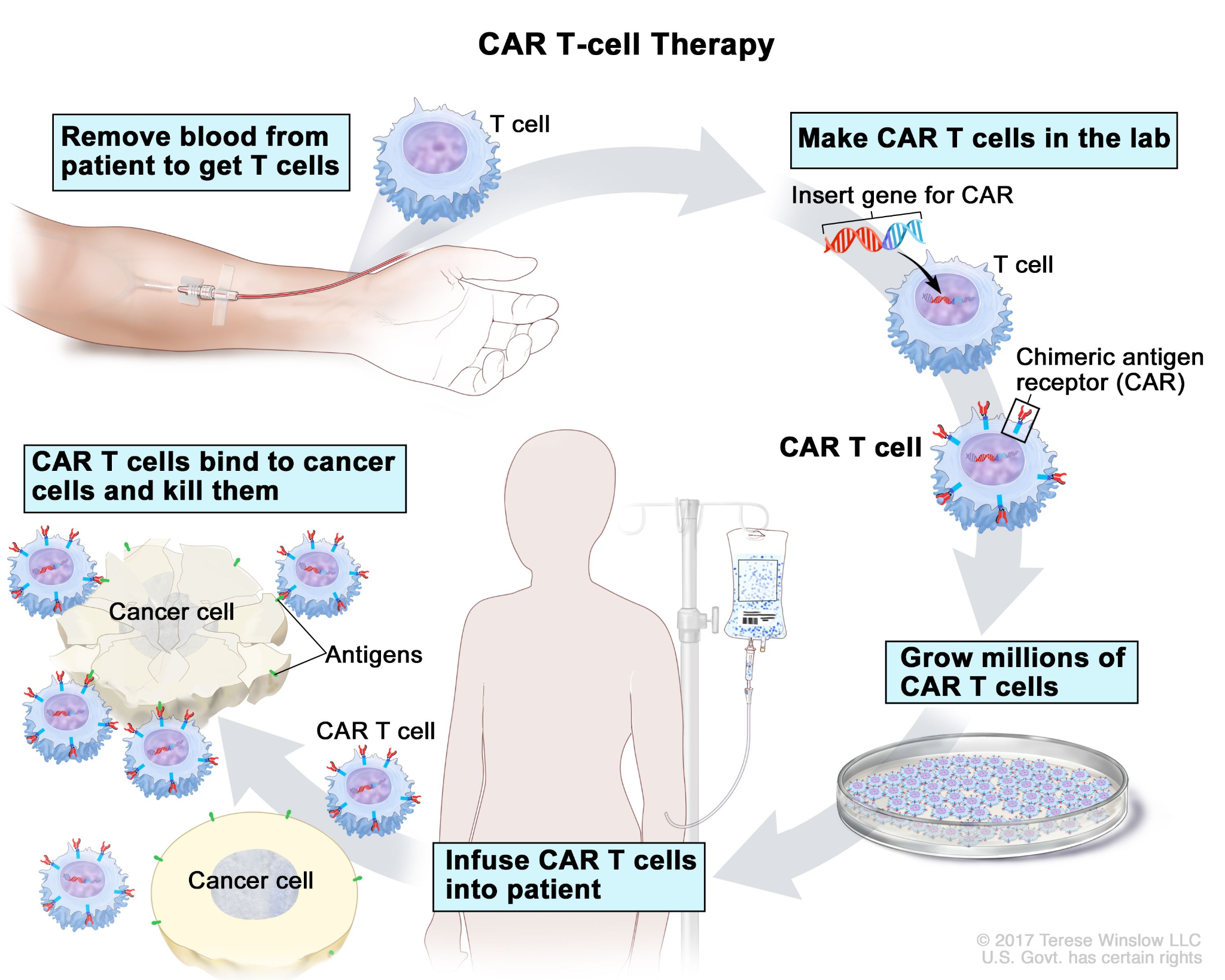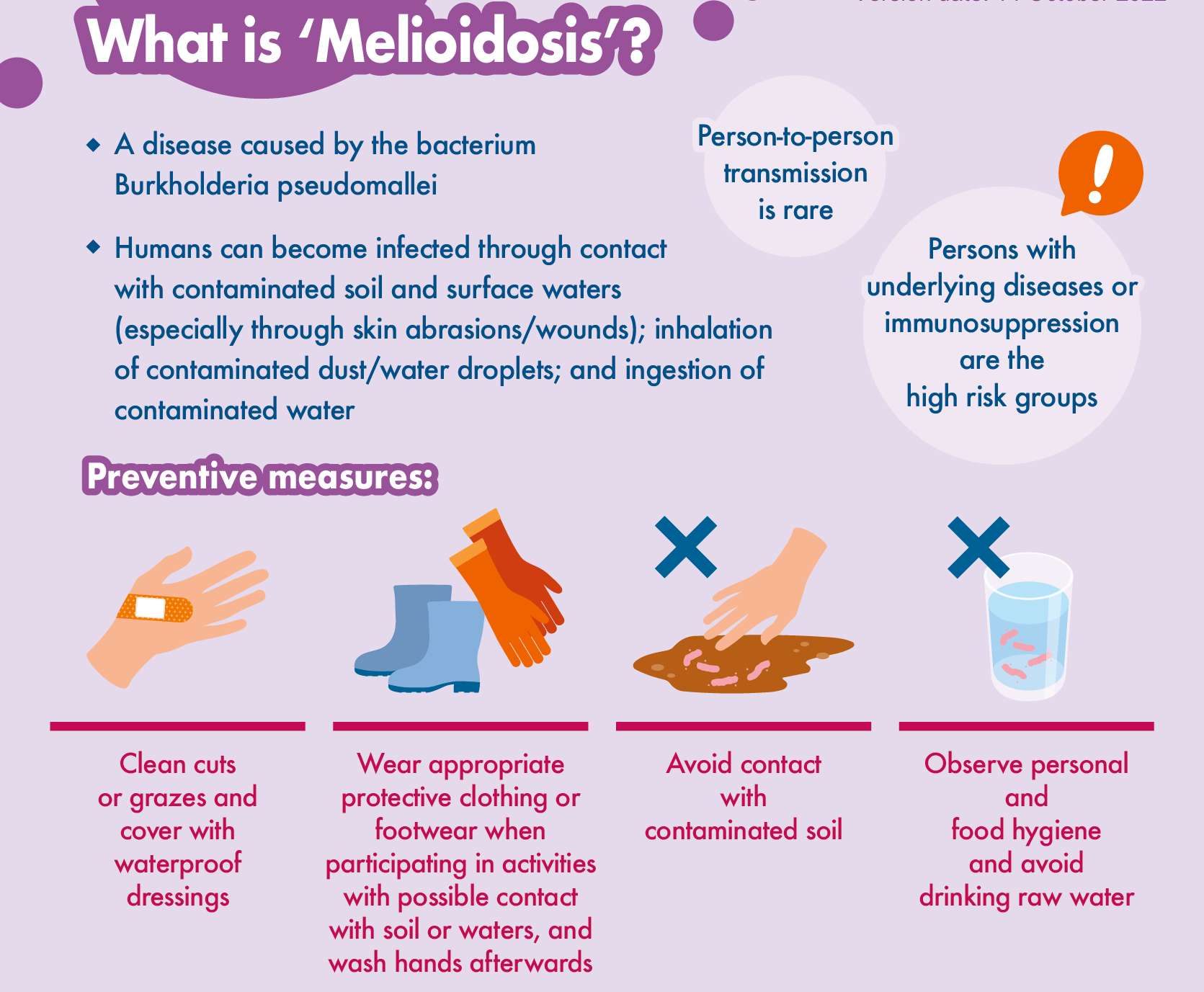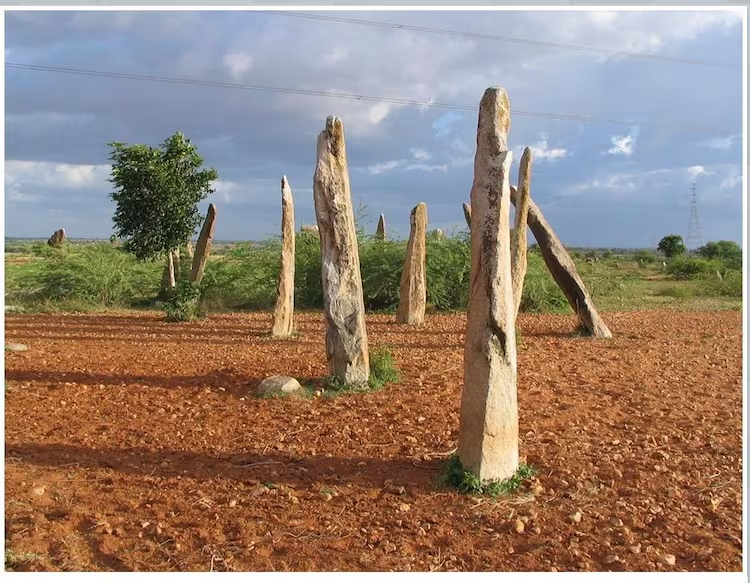Agriculture
Ensuring Agricultural Sustainability in India
For Prelims: National Mission for Sustainable Agriculture (NMSA), Soil Degradation, Sequester Carbon, National Action Plan on Climate Change (NAPCC), Disease-resistant Crops.
For Mains: Need of sustainable agriculture for prevention of environmental degradation.
Why in News?
Union Minister for Agriculture and Farmers’ Welfare highlighted the policy paper released by ICAR titled ‘A spatial assessment of sustainability in Indian agriculture’ and emphasised on the importance of National Mission for Sustainable Agriculture (NMSA).
- It found that sustainability of India’s agriculture is under severe threat due to water scarcity, soil degradation, and socio-economic vulnerabilities.
What are the Key Findings of the ICAR’s Policy Paper?
- Composite Index: The national average sustainability index is 0.49, indicating a moderate level of sustainability.
- The index is based on 51 indicators covering environmental health, soil and water quality, and socio-economic development.
- Performance of States: Mizoram, Kerala, MP, Andhra Pradesh, Manipur, West Bengal, and Uttarakhand outperform the national average due to crop diversification, infrastructure, credit access, and sustainable inputs.
- Rajasthan, Uttar Pradesh, Punjab, Bihar, Haryana, Jharkhand, and Assam face high risks due to arid conditions, climate change, and intensive farming practices.
- Major Threats to Agriculture:
- Water Scarcity: Groundwater depletion has become a serious concern in Punjab, Rajasthan, and Haryana, where the extraction rate has exceeded the recharge rate by 66, 51, and 34%, respectively.
- Water salinity is rising, majorly affecting aquifers in West Bengal, Andhra Pradesh, and Gujarat.
- Soil Erosion: Soil erosion from croplands is projected to reach 10 tonnes per hectare annually by 2050.
- Salinity-affected areas are projected to increase from 6.7 million hectares to 11 million hectares by 2030.
- Crop Yield Reductions: Climate change may cut rainfed rice yields by 20% by 2050 and 47% by 2080. Wheat may drop 19.3% by 2050 and 40% by 2080.
- Erratic Rainfall: 80% of India’s rainfall falls between June and September, causing floods and droughts, while monsoon dry spells are rising in rainfed areas.
- Kharif and rabi rainfall is projected to increase by 2050 leading to waterlogging, lodging (plant collapse), and pest and disease outbreaks.
- Water Scarcity: Groundwater depletion has become a serious concern in Punjab, Rajasthan, and Haryana, where the extraction rate has exceeded the recharge rate by 66, 51, and 34%, respectively.
What is Sustainable Agriculture?
- About: It is a holistic farming approach that meets current food and fiber needs while preserving resources for future generations.
- It includes practices like crop rotation, organic farming, and community-supported agriculture, ensuring environmental health, economic viability, and social equity.
- Benefits:
- Environmental Benefits: Improves soil health, conserves water, protects biodiversity, and reduces the carbon footprint.
- Economic Benefits: Ensures long-term productivity, lowers costs, creates market opportunities, and enhances climate resilience.
- Social Benefits: Produces healthier food, generates employment, and strengthens food security.
- Resilience to Climate Change: Organic farming, conservation tillage, and agroforestry sequester carbon, reduce emissions, and boost climate resilience.
What is the National Mission for Sustainable Agriculture (NMSA)?
- About: NMSA is a flagship initiative under the National Action Plan on Climate Change (NAPCC) aimed at promoting sustainable agricultural practices in India.
- Objectives:
- Enhance Agricultural Productivity: Improve productivity in rainfed areas, which account for 60% of India’s net sown area and 40% of total food production.
- Promote Sustainable Practices: Encourage the conservation and sustainable use of natural resources like soil and water.
- Climate Change Adaptation: Implement adaptation measures to make agriculture resilient to climate change impacts.
- Livelihood Diversification: Support farmers in diversifying their income sources through integrated farming systems
- Programmes of Action (POA): NMSA addresses ten key dimensions of Indian agriculture:
- Alignment with SDGs: NMSA contributes to SDG 2 (Zero Hunger) and SDG 13 (Climate Action) by promoting sustainable farming practices and resilience to climate change.
Way Forward
- Financial Incentives for Farmers: Offer financial rewards to farmers adopting sustainable practices like organic farming, crop rotation, and agroforestry and subsidies for organic fertilizers, biopesticides, and other eco-friendly inputs.
- Invest in Research and Development (R&D): Invest in R&D for drought, pest, and disease-resistant crops, and develop affordable organic inputs for small farmers.
- Market Access for Sustainable Produce: Improve storage, transport, and processing to cut post-harvest losses, and enable direct farmer-to-consumer sales for sustainable produce.
- Strengthen Environmental Regulations: Enforce strict regulations on water use, fertilizers, and pesticides to prevent overuse and pollution, with strong monitoring for compliance.
|
Drishti Mains Question: Groundwater depletion and soil degradation pose serious risks to Indian agriculture. Discuss the role of the National Mission for Sustainable Agriculture (NMSA) in mitigating these challenges. |
UPSC Civil Services Examination Previous Year Question (PYQ)
Prelims
Q. With reference to ‘Initiative for Nutritional Security through Intensive Millets Promotion’, which of the following statements is/are correct? (2016)
- This initiative aims to demonstrate the improved production and post-harvest technologies, and to demonstrate value addition techniques, in an integrated manner, with cluster approach.
- Poor, small, marginal and tribal farmers have larger stake in this scheme.
- An important objective of the scheme is to encourage farmers of commercial crops to shift to millet cultivation by offering them free kits of critical inputs of nutrients and micro irrigation equipment.
Select the correct answer using the code given below:
(a) 1 only
(b) 2 and 3 only
(c) 1 and 2 only
(d) 1, 2 and 3
Ans: (c)
Q. Consider the following international agreements: (2014)
- The International Treaty on Plant Genetic Resources for Food and Agriculture
- The United Nations Convention to Combat Desertification
- The World Heritage Convention
Which of the above has/have a bearing on biodiversity?
(a) 1 and 2 only
(b) 3 only
(c) 1 and 3 only
(d) 1, 2 and 3
Ans: (d)
Mains
Q. How far is the Integrated Farming System (IFS) helpful in sustaining agricultural production? (2019)


International Relations
India-New Zealand Relations
For Prelims: Raisina Dialogue, Authorized Economic Operators Mutual Recognition Arrangement (AEO-MRA), Indo-Pacific Oceans Initiative (IPOI), Digital Economy, Opening Doors to India Policy, Sanitary and Phytosanitary (SPS), Nuclear Suppliers Group (NSG).
For Mains: Key highlights of India-New Zealand relations, associated challenges and way forward.
Why in News?
The Prime Minister (PM) of New Zealand (NZ) made an official visit to India, held bilateral talks with India's PM, and issued India-New Zealand Joint Statement.
- The NZ Prime Minister attended the 10th Raisina Dialogue as the Chief Guest and delivered the Inaugural Keynote Address.
What are the Key Highlights of the India-New Zealand Joint Statement?
- Economic Cooperation: Both sides agreed to launch negotiations for a balanced, ambitious, and mutually beneficial trade agreement as per the NZ’s “Opening Doors to India” Policy.
- The Authorized Economic Operators Mutual Recognition Arrangement (AEO-MRA) was signed to ease the movement of goods between the two countries.
- Security Cooperation: A defense cooperation MoU was signed for regular engagements like military exercises and naval visits and NZ expressed interest in joining India's Indo-Pacific Oceans Initiative (IPOI).
- Global Cooperation: Both countries pledged to uphold a free, inclusive, and stable Indo-Pacific, supporting rules-based order and navigation freedom under UNCLOS.
- NZ endorsed India’s candidature for permanent membership in a reformed UN Security Council and supported its entry into the Nuclear Suppliers Group (NSG).
- Climate Change: NZ reaffirmed support for India's ISA, joined CDRI, and agreed to cooperate on SDGs, the Paris Climate Agreement and the Sendai Framework for Disaster Risk Reduction.
- Education and Sports: A renewed Education Cooperation Arrangement and a Sports Cooperation MoU were signed to strengthen academic partnerships, student exchanges, and sporting ties, with plans to celebrate 100 years of sports relations in 2026.
- Diaspora: Both leaders acknowledged the Indian diaspora’s role (6% of NZ’s population), for strengthening ties and committed to ensuring the safety of students and tourists.
- India raised concerns about pro-Khalistan activities in NZ, highlighting anti-India actions by certain illegal elements.
| Click Here to Read: What is Raisina Dialogue? |
Why Are India and New Zealand Important to Each Other?
India’s Importance for New Zealand
- Expanding Economic Partnerships: With a 1.4 billion population, a growing middle class, and an expanding services sector, India offers New Zealand significant opportunities in export of agricultural products, dairy, meat, wine, and collaborations in digital services.
- Skilled Workforce: India is NZ’s largest source of skilled migrants and 2nd-largest source of international students, with its professionals in IT, engineering, and healthcare helping address NZ’s skill shortages.
- Digital Economy: With 880 million internet users and leading global data consumption, India is a major digital economy, presenting NZ’s tech firms opportunities for IT, AI, fintech, and digital commerce collaborations.
- Strategic Cooperation: India's growing influence in the Indo-Pacific supports New Zealand's goal of regional stability, and strengthens its strategic position.
New Zealand’s Importance for India
- Advanced Farming Practices: New Zealand’s expertise in dairy and horticulture can support India’s farm modernization, while collaboration in food processing and logistics strengthens food security.
- Skill Development: NZ’s top-tier education attracts Indian students, while its vocational training programs can help India address its skill gaps and improve employability.
- Clean Energy: New Zealand’s expertise in climate technology and sustainability supports India’s low-carbon transition, with its firms recognized in HolonIQ’s Indo-Pacific Climate Tech 100.
- HolonIQ's Indo-Pacific Climate Tech 100 honors top climate tech startups across 14 IPEF partner countries annually.
- Lucrative Market: New Zealand's vast EEZ and maritime security concerns make it a potential buyer of India’s surveillance systems, patrol boats, and radars amid China’s Pacific expansion.
- New Zealand’s demand for organic, sustainable, handcrafted goods aligns with India’s premium silk, wool, and artisanal products.
What is New Zealand’s “Opening Doors to India” Policy?
- New Zealand’s Opening Doors to India policy is a strategic initiative launched in 2011 to strengthen New Zealand’s economic, political, and cultural ties with India.
- Key Components:
What are the Challenges in India-New Zealand Relations?
- Stalled FTA Negotiations: Free Trade Agreement (FTA) talks began in 2010 but stalled in 2015 due to India’s high tariffs on New Zealand’s dairy and agricultural exports to protect its local industry.
- Non-Tariff Barriers (NTBs): Indian exports like grapes, okra, and mangoes face Sanitary and Phytosanitary (SPS) barriers in New Zealand, while the lack of an Mutual Recognition Arrangement (MRA) for standards and certifications further complicates trade.
- Low Trade Volumes: In 2023-24, NZ’s trade with India totaled only USD 1.75 billion, with exports of USD 0.84 billion and imports of USD 0.91 billion.
- Limited Market Awareness: Market complexities hinder New Zealand’s trade with India, while India sees New Zealand mainly for tourism, overlooking its strengths in innovation, technology, and sustainability.
- Geopolitical Differences: New Zealand’s foreign policy is shaped by allies like Australia and the US, while its economic reliance on China may lead to differences with India on regional security and trade.
Way Forward
- Conclude FTA Negotiations: Addressing dairy and tariff disputes through dialogue, pursuing an Early Harvest Agreement, and focusing on sector-specific deals in horticulture, pharma, and tech can boost trade and FTA progress.
- For the time being both can sign an interim FTA similar to India-Australia ECTA.
- Enhance Market Access: Fast-track an MRA for standards, reduce NTBs through technical cooperation, and boost market awareness via trade fairs, business delegations, and workshops.
- Climate Change and Sustainability: Leverage New Zealand’s climate tech and renewable energy expertise for India’s clean transition, strengthen disaster resilience through CDRI, and collaborate on sustainable farming and food security.
- Defense Cooperation: Enhance cooperation under IPOI for regional stability, strengthen maritime security through joint exercises and intelligence sharing, and collaborate on counter-terrorism efforts.
|
Drishti Mains Question: Examine the key challenges in India-New Zealand relations and propose measures to strengthen cooperation. |
UPSC Civil Services Examination, Previous Year Question (PYQ)
Mains
Q. The new tri-nation partnership AUKUS is aimed at countering China’s ambitions in the Indo-Pacific region. Is it going to supersede the existing partnerships in the region? Discuss the strength and impact of AUKUS in the present scenario. (2021)
Q. Quadrilateral Security Dialogue (Quad) is transforming itself into a trade bloc from a military alliance, in present times Discuss. (2020)


Social Justice
Debate on Making Cancer a Notifiable Disease
For Prelims: Cancer, World Health Organization, National Cancer Registry Program, Cervical cancer
For Mains: Public Health Policies in India, Disease Notification in India, Cancer Prevention
Why in News?
There are growing calls to make cancer a notifiable disease in India, but the Union government resists, citing its non-communicable nature.
- The inclusion of snakebites as a notifiable disease (2024) and global precedents like the US listing lead poisoning (1995) as notifiable disease challenges this reasoning, prompting a re-evaluation of India’s stance on cancer notification.
What is Notifiable Disease in India?
- About: A notifiable disease is one that must be legally reported to government authorities by healthcare providers for real-time epidemiological tracking, resource allocation, and early intervention.
- The Epidemic Diseases Act, 1897 governs the notification and regulation of epidemic disease (rapid spread of disease to a large number) reporting.
- The World Health Organization (WHO) mandates notification for certain diseases to aid in global disease surveillance and control.
- Examples: Infectious diseases like tuberculosis, malaria, and Covid-19 are typically notifiable due to their potential to spread.
- However, the Ministry of Health and Family Welfare (MoHFW) classified snakebite as a notifiable disease, despite it being non-communicable.
What is the Debate on Classifying Cancer as a Notifiable Disease?
Arguments in Favor
- Better Data Collection: The National Cancer Registry Program (NCRP), covering only 16% of India’s population, lacks comprehensive data, drawing criticism from a parliamentary committee, highlighting the need for improved tracking.
- With enhanced data nearly 50% of cancer deaths are preventable by controlling risk factors like smoking, air pollution, and asbestos exposure.
- Some cancers, like cervical cancer, are linked to human papillomavirus (spreads through contact), prompting experts to propose classifying cancer as a “documentable disease” for mandatory data collection.
- Making cancer notifiable would ensure real-time data on incidence, prevalence, and mortality rates can be prevented by controlling risk factors like tobacco, air pollution, and carcinogenic chemicals.
- Indian States Approach: 17 states have made cancer notifiable through administrative orders, highlighting the need for a national-level mandate.
- States with high cancer incidence, like Kerala and Mizoram, could benefit from mandatory notification for better intervention.
- Global Precedents: Countries like Australia have made cancer notifiable, while the United Kingdom mandates cancer registration, in contrast, India’s NCRP registration remains voluntary.
Arguments Against
- Non-Communicable Nature: Unlike infectious diseases, cancer is not contagious or an immediate public health threat, making mandatory notification unnecessary.
- Privacy Concerns: Notifiable diseases prioritize public health over individual privacy, which may deter people from seeking diagnosis.
- Cancer carries social stigma, and legal obligations to report cases could reduce patient willingness to seek timely treatment.
- Burden on Healthcare Providers: Physicians may face unnecessary legal burdens if notification is made mandatory.
- Cancer requires personalized long term treatment, and notifiability is typically used for emergency containment, not long-term diseases.
India’s Existing Cancer Surveillance Mechanism
- The NCRP under Indian Council of Medical Research (ICMR), tracks cancer demographics, diagnosis, treatment, and survival through Hospital-Based (HBRs) and Population-Based Registries (PBRs).
- As of 2022, India has 269 HBRs and 38 PBRs, but coverage remains inadequate.
- In 2023, over 14 lakh cancer cases were reported, with 100 per 1 lakh people diagnosed.
What Should India Do to Strengthen Cancer Surveillance?
- Phased Notification Approach: Classify high-risk cancers like cervical and lung cancer as “documentable diseases” for mandatory data collection.
- Integrate Digital Health Technologies: Link cancer data collection with the Ayushman Bharat Digital Mission (ABDM) to create a centralized cancer registry.
- Integrate cancer screening records with CoWIN-like platforms to ensure targeted follow-ups and treatment adherence.
- Cancer Reporting: Increase the number of PBRs to expand cancer testing and related facilities nationwide, and implement universal screening for high-risk cancers.
- Empower local health workers (like Accredited Social Health Activists) to actively report cancer cases and conduct door-to-door awareness campaigns.
- Expand cancer coverage under Pradhan Mantri Jan Arogya Yojana and increase insurance support, as treatment is long-term and costly.
- This will enable free screening for low-income families, ensuring financial barriers do not delay diagnosis and treatment.
- Reduce Stigma: Partner with spiritual leaders, influencers, and media icons to destigmatize cancer reporting and normalize screenings.
- Promote cancer survivors as “ambassadors”, sharing their stories to inspire early detection and eliminate fear surrounding the disease.
|
Drishti Mains Question: Discuss the merits and challenges of making cancer a notifiable disease in India. Should India adopt a national-level mandatory cancer reporting system?. |
UPSC Civil Services Examination, Previous Year Questions (PYQs)
Prelims
Q. With reference to the treatment of cancerous tumours, a tool called cyberknife has been making the news. In this context, which one of the following statements is not correct? (2010)
(a) It is a robotic image guided system
(b) It delivers an extremely precise dose of radiation
(c) It has the capability of achieving sub-millimetre accuracy
(d) It can map the spread of tumour in the body
Ans: (d)
Q. ‘RNA interference (RNAi)’ technology has gained popularity in the last few years. Why? (2019)
- It is used in developing gene-silencing therapies.
- It can be used in developing therapies for the treatment of cancer.
- It can be used to develop hormone replacement therapies.
- It can be used to produce crop plants that are resistant to viral pathogens.
Select the correct answer using the code given below.
(a) 1, 2 and 4
(b) 2 and 3
(c) 1 and 3
(d) 1 and 4 only
Ans: (a)
Mains
Q. “Besides being a moral imperative of a Welfare State, primary health structure is a necessary precondition for sustainable development.” Analyse. (2021)
Q. Appropriate local community-level healthcare intervention is a prerequisite to achieve ‘Health for All’ in India. Explain. (2018)


Important Facts For Prelims
India’s CAR T-Cell Therapy
Why in News?
The clinical trial results of India’s first Chimeric Antigen Receptor (CAR) T-Cell Therapy, published in The Lancet Haematology, report a 73% response rate in leukemia and lymphoma patients.
What are the Key Findings of India’s CAR T-Cell Therapy Clinical Trial?
- High Success Rate: The trial involved patients with relapsed or refractory B-cell cancers (Leukemia (cancer affecting bone marrow and blood) and Lymphoma (cancer of the lymphatic system)), who often have limited treatment options.
- Among the patients analyzed, 73% showed a positive response to the therapy, offering new hope for such cases.
- Comparable to Global Therapies: India's CAR T-cell therapy matches global effectiveness but is 20 times cheaper, costing Rs 25 lakh compared to Rs 3-4 crore internationally, where total expenses can exceed Rs 8 crore.
- Side Effects Observed: The clinical trials of India’s CAR T-cell therapy reported manageable side effects, with patients experiencing neutropenia (low white blood cells), thrombocytopenia (low platelets), and developing anemia (low red blood cells).
- Some patients showed cytokine release syndrome (CRS), causing fever and inflammation.
- Two treatment-related deaths were reported, but overall, the safety profile was considered manageable.
What is CAR T-Cell Therapy?
- About: CAR T-cell therapy is an advanced cancer treatment that modifies a patient’s T-cells (a type of immune cell) to fight cancer more effectively.
- Working: A patient's T-cells are extracted from their blood and genetically modified (to recognize and attack cancer cells).
- These modified cells, known as Chimeric Antigen Receptor (CAR) T-cells, are multiplied and reintroduced into the patient to target B-cells and prevent relapses.
- Importance: When B-cell tumors relapse or become refractory (return after treatment or do not respond to initial therapy), treatment options are limited, often leading to patient death.
- Uncontrolled B-cell growth causes severe complications due to their role in antibody production.
- India's CAR T-cell therapy provides an additional, patient-specific treatment option, as the modified T-cells remain in the body, offering long-term immunity against cancer recurrence.
- It is a patient-specific treatment, making it highly precise compared to traditional chemotherapy.
- NexCAR19: In 2023, NexCAR19 became India’s first approved indigenous CAR-T cell therapy, developed through a collaboration between IIT Bombay, Tata Memorial Centre, and ImmunoACT (a company incubated at IIT Bombay).
- As the world's most affordable CAR-T therapy, it positions India on the global map for advanced cell and gene therapy.
- Implications: Researchers are exploring CAR T-Cell Therapy applications and combination with immunotherapies, paving the way for broader adoption of gene-modified cell treatments in India.
UPSC Civil Services Examination, Previous Year Question (PYQ)
Prelims
Q. Which one of the following statements best describes the role of B cells and T cells in the human body? (2022)
(a) They protect the environmental allergens. body
(b) They alleviate the body’s pain and inflammation.
(c) They act as immunosuppressants in the body.
(d) They protect the body from diseases caused by pathogens.
Ans: (d)


Facts for UPSC Mains
Narasu Appa Mali Case 1951
Why in News?
The landmark case of State of Bombay v. Narasu Appa Mali Case, 1951 has had lasting implications on the debate over whether personal laws can be subjected to constitutional scrutiny.
- This case remains relevant today, particularly in discussions surrounding the Uniform Civil Code (UCC) and gender justice within religious law.
What is the State of Bombay v. Narasu Appa Mali Case, 1951?
- Background: Narasu Appa Mali, a resident of Maharashtra, was convicted by a session court under the Bombay Prevention of Hindu Bigamous Marriages Act, 1946 for marrying a second wife as per the custom.
- The act made bigamy a punishable offence.
- The court ruled the law didn't violate Article 14, even though it applied only to Hindus, while Muslim men could practice polygamy.
- Bombay High Court: It upheld the constitutionality of the 1946 law, stating that personal laws, unless codified, are not subject to scrutiny for violation of fundamental rights.
- It ruled that personal laws are immune from constitutional scrutiny under Article 13, allowing even regressive practices.
- Influence on Later Cases:
- Triple Talaq Case, 2017: The Supreme Court (SC) struck down instant triple talaq, ruling it was codified under the Shariat Act, 1937 and subject to constitutional scrutiny.
- Sabarimala Case, 2018: The SC criticized the Narasu judgment, asserting that all laws, including personal laws, must follow constitutional principles.
- Current Debate: Experts argue the Narasu ruling should be reconsidered for gender justice.
- It is often cited to justify non-interference in personal laws, causing conflicting rulings on marriage, inheritance, and customs.
Other Cases Related to Judicial Intervention in Personal Laws
- Shah Bano Case, 1985: Recognized Muslim women’s right to maintenance, highlighting the need for gender justice in personal laws.
- Sarla Mudgal Case, 1995: Supreme Court advocated UCC to prevent Hindu men from converting to Islam solely to practice polygamy.
- Shayara Bano Case, 2017: Declared Triple Talaq unconstitutional, promoting gender justice.
|
Drishti Mains Question: Personal laws should align with constitutional morality rather than religious traditions. Discuss. |
UPSC Civil Services Examination, Previous Year Question (PYQ)
Mains
Q. Discuss the possible factors that inhibit India from enacting for its citizens a uniform civil code as provided for in the Directive Principles of State Policy. (2015)


Important Facts For Prelims
Swadesh Darshan Scheme
Why in News?
The Central Government, in collaboration with States, has approved 116 new tourist destinations for development under schemes like Swadesh Darshan 2.0 (SD2.0), Challenge-Based Destination Development (CBDD), and Special Assistance to States for Capital Investment (SASCI).
Special Assistance to States for Capital Investment (SASCI) Scheme
- SASCI scheme, launched in 2020-21 amid the Covid-19 pandemic, aims to support state governments in capital investment projects, boosting capital expenditure and enhancing economic productivity.
What is the Swadesh Darshan Scheme (SDS)?
- Swadesh Darshan Scheme: It is a 100% centrally funded (Central Sector Scheme) launched by the Ministry of Tourism in 2015 to develop sustainable and responsible tourism in India.
- It aims at the integrated development of theme-based tourist circuits across India such as Buddhist, Coastal, Desert, Eco, Heritage, Northeast etc.
- It provides financial assistance to State Governments, UT Administrations, and Central Agencies for tourism infrastructure development.
- Operation & Maintenance (O&M) of sanctioned projects is the responsibility of respective State/UT governments.
- Swadesh Darshan 2.0 (SD2.0): SD2.0 adopts a holistic approach for development of sustainable and responsible tourism destinations, aligning with the ‘Vocal for Local’ and Aatmanirbhar Bharat vision,
- It aims to increase private sector investment in tourism, hospitality and asset management marking a shift from circuit-based tourism to a destination-centric model for long-term growth.
- Challenge-Based Destination Development (CBDD): CBDD is a sub-scheme under SD2.0 that adopts a competitive approach to develop tourism destinations with a focus on sustainability, digitalization, skill development, MSME support, and effective management.
What is the Current Status of the Tourism Sector in India?
|
What are the Key Initiatives for Tourism Development in India?
- National Tourism Policy, 2022
- Dekho Apna Desh Initiative
- Ek Bharat Shreshtha Bharat
- Cruise Tourism
- PRASAD Scheme: Aims at the development and beautification of pilgrimage sites to boost religious tourism.
- HRIDAY (Heritage City Development and Augmentation Yojana): HRIDAY seeks to preserve and revitalize heritage cities, ensuring sustainable urban development.
- Development of Tribal Homestays: Homestays for tourists are being developed in tribal areas under PM Janjatiya Unnat Gram Abhiyan (PM-JUGA).
- Digital Initiatives:
- e-Visa Facility
- Swachh Paryatan Mobile App: Enables tourists to report cleanliness issues at tourist sites for prompt action.
What is the Significance of the Tourism Sector for India?
What are the Key Issues Related to India’s Tourism Sector?
|
UPSC Civil Services Examination, Previous Year Question (PYQ)
Mains
Q.1 How can the mountain ecosystem be restored from the negative impact of development initiatives and tourism? (2019)
Q.2 The states of Jammu and Kashmir, Himachal Pradesh and Uttarakhand are reaching the limits of their ecological carrying capacity due to tourism. Critically evaluate. (2015)


Rapid Fire
Pi Day
Pi Day, celebrated annually on 14th March, honors the mathematical constant π (pi). The day also coincides with Albert Einstein’s birth anniversary (1879) and the death anniversary of Stephen Hawking (2018).
- Significance of Pi: It represents the ratio of a circle’s circumference to its diameter and is an irrational, infinite number.
- The Greek letter π was first used in 1706 by Welsh mathematician William Jones, inspired by the words “periphery” and “perimeter”.
- Indian’s Contribution: Aryabhata (476-550 CE), an Indian mathematician and astronomer, calculated an approximate value of pi as 3.1416 in his work "Aryabhatiya."
- The first algorithms to calculate pi to millions of digits were based on formulae published by Indian mathematician Srinivasa Ramanujan in 1914.
- Applications of Pi: In mathematics and engineering, Pi is essential for calculating circle properties, wave equations, and structural designs.
- Space agencies like Indian Space Research Organisation (ISRO) use π for determining orbital paths, satellite positioning, and spacecraft trajectories.
- Even in everyday life, π is used for the construction of domes and bridges, making it a fundamental constant in science and technology.
| Read more: Pi Day |


Rapid Fire
Melioidosis
A recent study highlights how climate conditions, particularly monsoon-related factors, influence the spread of melioidosis.
- Melioidosis: It is a bacterial infectious disease, linked to rainfall, temperature, and humidity.
- It is caused by Burkholderia pseudomallei and primarily acquired by inoculation, inhalation and/or ingestion of soil- and water-dwelling environmental saprophytes.
- South Asia (endemic to Bangladesh and Sri Lanka), including India, accounts for 44% of global melioidosis cases, with Odisha as a hotspot due to its agriculture and extreme weather.
- It is primarily found in Northern Australia and Southeast Asia.
- Symptoms range from mild skin infections to severe pneumonia and sepsis, with a fatality rate of up to 50% in septic cases.
- It is not transmitted from animals to humans, and human-to-human transmission is rare.
- Melioidosis can be treated with antibiotics but it trouble doctors because:
- Diverse Symptoms: Causes a wide range of infections, from mild skin issues to severe pneumonia and sepsis.
- Diagnostic Challenges: Often misidentified as Pseudomonas aeruginosa, a more common bacterium, leading to inappropriate treatment.
- Complex Treatment: Needs prolonged therapy (12-20 weeks) with a risk of recurrence if not treated properly.
| Read More: Climate Change & Infectious Diseases |


Rapid Fire
Menhirs
The Mudumal megalithic menhirs in Telangana’s Narayanpet district have been added to UNESCO’s tentative list for World Heritage Sites in 2025.
- A megalith is a large stone used in prehistoric structures, serving as either a burial site or a commemorative monument.
- Menhirs in Europe date back to 7,000 Before Present (BP), with the Grand Menhir Brisé in France being the tallest, originally 20.6 meters high.
Menhirs:
- About: Menhirs are large, upright stones, often tapered at the top, erected by humans. Mudumal’s menhirs are India's oldest menhirs, dating back 3,500–4,000 BP, and are located near the banks of the Krishna River.
- BP is a time scale counting years before 1950 CE.
- The Mudumal menhir site is well-preserved megalithic burial sites.
- They are precisely aligned with solar events like equinoxes and solstices, with a stone featuring cup-marks of Ursa Major (Saptarshi Mandal), the earliest known star representation in South Asia.
- Locals worship the menhirs as "Niluralla Thimmappa," with one revered as Goddess Yellamma, preserving ancient traditions.
Different from Hero Stones: Hero stones (Veeragallu in Kannada, Natukal in Tamil) are memorials honoring warriors who died in battle. Found across India, especially in the South, they were erected between the 1st millennium BCE and the 18th century CE to commemorate heroic sacrifices.
| Read More: Megalithic Burial Sites |


Rapid Fire
India’s Disinvestment Strategy in FY25
The Indian government’s disinvestment receipts in FY25 are at their lowest since 2014-15, signaling a strategic shift from aggressive stake sales to optimizing Public Sector Enterprises (PSEs) performance.
- Disinvestment Receipts: As of FY25, the government has accrued only Rs 9,319 crore (lower than Rs 16,507 crore in FY24) through disinvestment, marking the lowest level since 2014-15 despite post-pandemic economic recovery.
- Shift in Disinvestment Policy: Since FY24, the government has stopped setting annual disinvestment targets, moving towards a "value creation" approach for PSEs.
- The new strategy includes higher capital expenditure, improved dividends, phased market dilution, and strategic privatization where feasible.
- Disinvestment: It is the government's process of selling its stake in PSEs to raise funds, reduce fiscal burden, and boost private participation. It includes Strategic Disinvestment (full or substantial stake sale with management transfer) and Minority Stake Sale (partial sale without management transfer).
- Disinvestment methods include Initial Public Offer for unlisted companies, Further Public Offer for listed ones, Offer for Sale for quick stake dilution, Buyback of Shares to consolidate ownership or utilize surplus cash, and Exchange Traded Funds (ETF).
- The disinvestment process is conducted by the Department of Investment and Public Asset Management under the Ministry of Finance.
| Read more: Status and Proceeds of Disinvestment |



